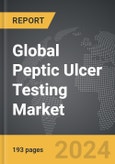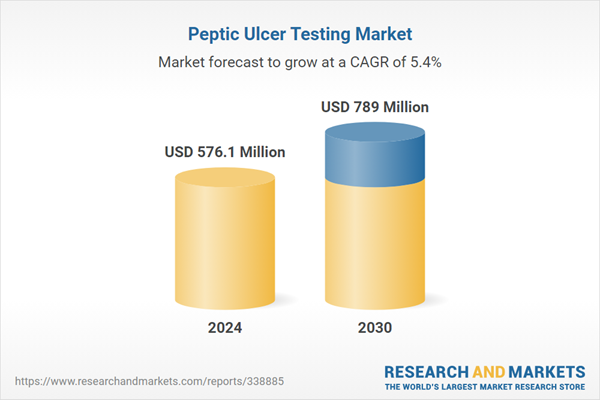Global Glucose Monitoring Devices Market - Key Trends and Drivers Summarized
The market for glucose monitoring devices is experiencing rapid growth, fueled by technological advancements, increasing diabetes prevalence, and a rising emphasis on proactive health management. Global diabetes rates are climbing due to factors such as obesity, aging populations, and lifestyle habits such as poor diet and inactivity, amplifying the need for effective monitoring solutions. Continuous Glucose Monitors (CGMs) have evolved significantly, offering high accuracy and simplicity beyond their original insulin therapy support.Continued market expansion hinges on technological progress, healthcare integration, and the escalating diabetes burden worldwide. Innovations like non-invasive technologies, AI integration, and wearable devices are shaping the future landscape, promising enhanced diabetes management and patient care. As these solutions become more accessible, they're expected to significantly improve global diabetes management, especially as healthcare infrastructure strengthens in emerging economies, presenting ample growth opportunities for manufacturers.
Key market drivers and trends include technological leaps such as CGM systems, which provide real-time insights into glucose levels, and the integration of AI into glucose monitoring, AI is increasingly being incorporated into glucose monitoring systems to enhance the predictive accuracy of devices. These systems can analyze data over time to predict future trends in glucose levels, enabling preemptive management of potential issues. Artificial Intelligence (AI) is reshaping many aspects of healthcare, including diabetes management Government policies promoting better screening and monitoring, alongside patient education emphasizing self-monitoring, further drive adoption. Wearable glucose monitors that seamlessly integrate with everyday life are gaining traction. These devices continuously track glucose levels and offer the convenience of not having to perform multiple daily finger-prick tests.
Report Scope
The report analyzes the Peptic Ulcer Testing market, presented in terms of units. The analysis covers the key segments and geographic regions outlined below.Segments: Diagnostic Test (Laboratory Tests, Upper Endoscopy, Gastrointestinal Endoscopy); End-Use (Laboratories, Hospitals, Other End-Uses).
Geographic Regions/Countries: World; United States; Canada; Japan; China; Europe (France; Germany; Italy; United Kingdom; and Rest of Europe); Asia-Pacific; Rest of World.
Key Insights:
- Market Growth: Understand the significant growth trajectory of the Laboratory Tests segment, which is expected to reach US$410.6 Million by 2030 with a CAGR of a 5.9%. The Upper Endoscopy segment is also set to grow at 5.0% CAGR over the analysis period.
- Regional Analysis: Gain insights into the U.S. market, valued at $155.1 Million in 2024, and China, forecasted to grow at an impressive 5.1% CAGR to reach $124.2 Million by 2030. Discover growth trends in other key regions, including Japan, Canada, Germany, and the Asia-Pacific.
Why You Should Buy This Report:
- Detailed Market Analysis: Access a thorough analysis of the Global Peptic Ulcer Testing Market, covering all major geographic regions and market segments.
- Competitive Insights: Get an overview of the competitive landscape, including the market presence of major players across different geographies.
- Future Trends and Drivers: Understand the key trends and drivers shaping the future of the Global Peptic Ulcer Testing Market.
- Actionable Insights: Benefit from actionable insights that can help you identify new revenue opportunities and make strategic business decisions.
Key Questions Answered:
- How is the Global Peptic Ulcer Testing Market expected to evolve by 2030?
- What are the main drivers and restraints affecting the market?
- Which market segments will grow the most over the forecast period?
- How will market shares for different regions and segments change by 2030?
- Who are the leading players in the market, and what are their prospects?
Report Features:
- Comprehensive Market Data: Independent analysis of annual sales and market forecasts in US$ Million from 2024 to 2030.
- In-Depth Regional Analysis: Detailed insights into key markets, including the U.S., China, Japan, Canada, Europe, Asia-Pacific, Latin America, Middle East, and Africa.
- Company Profiles: Coverage of players such as Beckman Coulter Inc., Becton Dickinson and Company, Biohit Oyj, Biomerica Inc., bioMérieux SA and more.
- Complimentary Updates: Receive free report updates for one year to keep you informed of the latest market developments.
Some of the 41 companies featured in this Peptic Ulcer Testing market report include:
- Beckman Coulter Inc.
- Becton Dickinson and Company
- Biohit Oyj
- Biomerica Inc.
- bioMérieux SA
- Bio-Rad Laboratories Inc.
- DiaSorin S.p.A.
- EKF Diagnostics
- Exalenz Bioscience Ltd.
- Halyard Health Inc.
- Kibion AB
- Meridian Bioscience Inc.
- Orion Diagnostica Oy
- Otsuka America Pharmaceutical Inc.
- Quidel Corporation
- Sekisui Diagnostics LLC
- Thermo Fischer Scientific Inc.
Tariff Impact Analysis: Key Insights for 2025
Global tariff negotiations across 180+ countries are reshaping supply chains, costs, and competitiveness. This report reflects the latest developments as of April 2025 and incorporates forward-looking insights into the market outlook.The analysts continuously track trade developments worldwide, drawing insights from leading global economists and over 200 industry and policy institutions, including think tanks, trade organizations, and national economic advisory bodies. This intelligence is integrated into forecasting models to provide timely, data-driven analysis of emerging risks and opportunities.
What’s Included in This Edition:
- Tariff-adjusted market forecasts by region and segment
- Analysis of cost and supply chain implications by sourcing and trade exposure
- Strategic insights into geographic shifts
Buyers receive a free July 2025 update with:
- Finalized tariff impacts and new trade agreement effects
- Updated projections reflecting global sourcing and cost shifts
- Expanded country-specific coverage across the industry
Table of Contents
Companies Mentioned (Partial List)
A selection of companies mentioned in this report includes, but is not limited to:
- Beckman Coulter Inc.
- Becton Dickinson and Company
- Biohit Oyj
- Biomerica Inc.
- bioMérieux SA
- Bio-Rad Laboratories Inc.
- DiaSorin S.p.A.
- EKF Diagnostics
- Exalenz Bioscience Ltd.
- Halyard Health Inc.
- Kibion AB
- Meridian Bioscience Inc.
- Orion Diagnostica Oy
- Otsuka America Pharmaceutical Inc.
- Quidel Corporation
- Sekisui Diagnostics LLC
- Thermo Fischer Scientific Inc.
Table Information
| Report Attribute | Details |
|---|---|
| No. of Pages | 193 |
| Published | April 2025 |
| Forecast Period | 2024 - 2030 |
| Estimated Market Value ( USD | $ 576.1 Million |
| Forecasted Market Value ( USD | $ 789 Million |
| Compound Annual Growth Rate | 5.4% |
| Regions Covered | Global |









